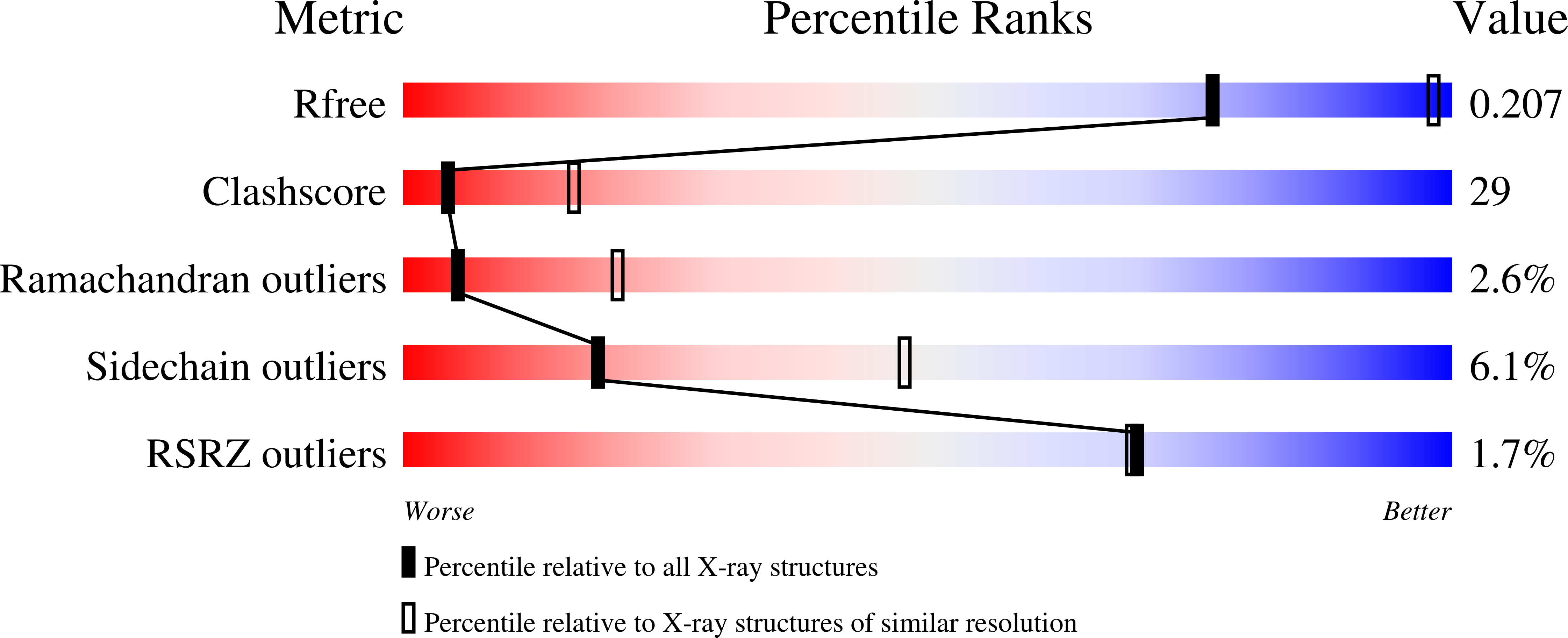Structures of nitric oxide synthase isoforms complexed with the inhibitor AR-R17477 suggest a rational basis for specificity and inhibitor design
Fedorov, R., Vasan, R., Ghosh, D.K., Schlichting, I.(2004) Proc Natl Acad Sci U S A 101: 5892-5897
- PubMed: 15071192
- DOI: https://doi.org/10.1073/pnas.0306588101
- Primary Citation of Related Structures:
1VAF, 1VAG - PubMed Abstract:
The high level of amino acid conservation and structural similarity of the substrate-binding sites of the oxygenase domains of the nitric oxide synthase (NOS) isoforms (eNOSoxy, iNOSoxy, nNOSoxy) make the interpretation of the structural basis of inhibitor isoform specificity a challenge, and provide few clues for the design of new selective compounds. Crystal structures of iNOSoxy and nNOSoxy complexed with the neuronal NOS-specific inhibitor AR-R17447 suggest that specificity is provided by the interaction of the chlorophenyl group with an isoform-unique substrate access channel residue (L337 in rat neuronal NOS, N115 in mouse inducible NOS). This is confirmed by biochemical analysis of site-directed mutants. Inhibitors combining guanidinium-like structural motifs with long chains specifically targeting this residue are good candidates for rational isoform-specific drug design. Based on this finding, modifications of AR-R17447 to improve the specificity for the human isoforms are suggested.
Organizational Affiliation:
Max Planck Institut für Molekulare Physiologie, Abteilung Biophysikalische Chemie, Otto Hahn Strasse 11, 44227 Dortmund, Germany.


















